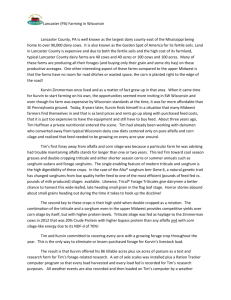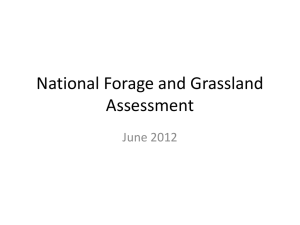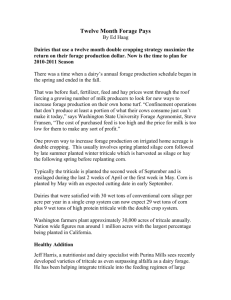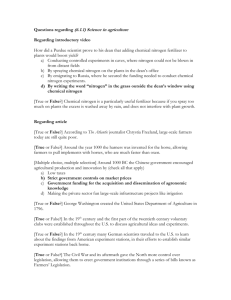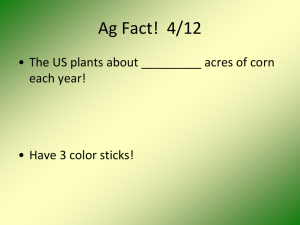Annuals Help Dairyman Feed His Cows by Larry Hawkins WWW
advertisement
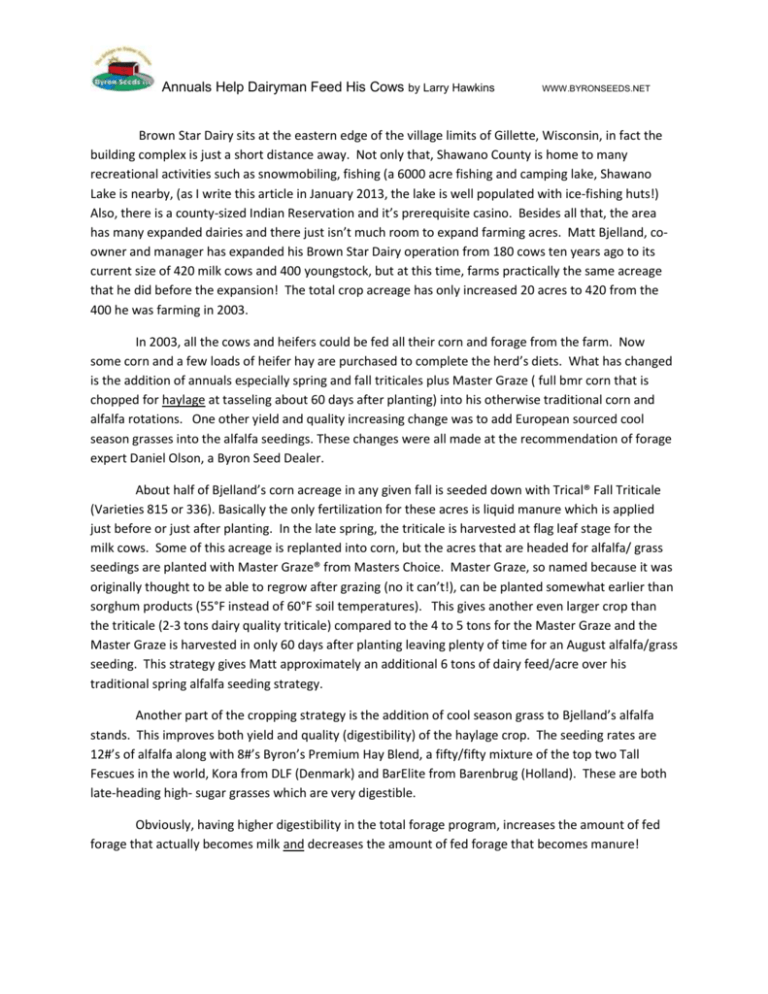
Annuals Help Dairyman Feed His Cows by Larry Hawkins WWW.BYRONSEEDS.NET Brown Star Dairy sits at the eastern edge of the village limits of Gillette, Wisconsin, in fact the building complex is just a short distance away. Not only that, Shawano County is home to many recreational activities such as snowmobiling, fishing (a 6000 acre fishing and camping lake, Shawano Lake is nearby, (as I write this article in January 2013, the lake is well populated with ice-fishing huts!) Also, there is a county-sized Indian Reservation and it’s prerequisite casino. Besides all that, the area has many expanded dairies and there just isn’t much room to expand farming acres. Matt Bjelland, coowner and manager has expanded his Brown Star Dairy operation from 180 cows ten years ago to its current size of 420 milk cows and 400 youngstock, but at this time, farms practically the same acreage that he did before the expansion! The total crop acreage has only increased 20 acres to 420 from the 400 he was farming in 2003. In 2003, all the cows and heifers could be fed all their corn and forage from the farm. Now some corn and a few loads of heifer hay are purchased to complete the herd’s diets. What has changed is the addition of annuals especially spring and fall triticales plus Master Graze ( full bmr corn that is chopped for haylage at tasseling about 60 days after planting) into his otherwise traditional corn and alfalfa rotations. One other yield and quality increasing change was to add European sourced cool season grasses into the alfalfa seedings. These changes were all made at the recommendation of forage expert Daniel Olson, a Byron Seed Dealer. About half of Bjelland’s corn acreage in any given fall is seeded down with Trical® Fall Triticale (Varieties 815 or 336). Basically the only fertilization for these acres is liquid manure which is applied just before or just after planting. In the late spring, the triticale is harvested at flag leaf stage for the milk cows. Some of this acreage is replanted into corn, but the acres that are headed for alfalfa/ grass seedings are planted with Master Graze® from Masters Choice. Master Graze, so named because it was originally thought to be able to regrow after grazing (no it can’t!), can be planted somewhat earlier than sorghum products (55°F instead of 60°F soil temperatures). This gives another even larger crop than the triticale (2-3 tons dairy quality triticale) compared to the 4 to 5 tons for the Master Graze and the Master Graze is harvested in only 60 days after planting leaving plenty of time for an August alfalfa/grass seeding. This strategy gives Matt approximately an additional 6 tons of dairy feed/acre over his traditional spring alfalfa seeding strategy. Another part of the cropping strategy is the addition of cool season grass to Bjelland’s alfalfa stands. This improves both yield and quality (digestibility) of the haylage crop. The seeding rates are 12#’s of alfalfa along with 8#’s Byron’s Premium Hay Blend, a fifty/fifty mixture of the top two Tall Fescues in the world, Kora from DLF (Denmark) and BarElite from Barenbrug (Holland). These are both late-heading high- sugar grasses which are very digestible. Obviously, having higher digestibility in the total forage program, increases the amount of fed forage that actually becomes milk and decreases the amount of fed forage that becomes manure! Annuals Help Dairyman Feed His Cows by Larry Hawkins WWW.BYRONSEEDS.NET A third key is the use of the long and short corn hybrids depending on whether the corn is following triticale or the land has been fallow since last fall. The interesting fact is that Matt has been using MC 590 from Masters Choice (116 days) and MC573 (111 days) as his longer varieties and MC530 (105 days) as his short one. After all, Brown Star Dairy sits about 30 miles northwest of Green Bay, Wisconsin! As many of you know in the north MC590 is ready to be chopped 4-5 days before its relative maturity would indicate. Also his short day corn is MC530, in the 105 day relative maturity range. To sum up Matt’s forage maximization program: Winter triticale is used on as many acres as the time allows. This adds between 2 and three tons dry matter highly digestible forage per acre. Some other corn acres are seeded into winter rye (triticale can be planted as late as September and rye can be planted even in November. These acres produce heifer haylage. When triticale comes off in the spring, Master Graze is planted on the acres that will be fall seeded into alfalfa/ grass (usually about 60 acres). The total of the triticale and Master Graze yields about 6 tons DM over doing a spring alfalfa seeding and the fall planted grass/alfalfa produces a full crop of haylage the next year with fewer problems with weed pressure. These crops are high energy dairy cow feeds! The rest of the triticale acres are planted in shorter day corn silage hybrids. These triticale acres added to the corn silage yields more than the corn silage alone. The fallow acres were already planted into longer day corn silage hybrids. Adding cool season grasses, especially when using tall fescue typically adds between ½ to 1½ tons DM per acre over straight alfalfa. Matt seeds 10#’s Byron’s Premium Hay Blend with 12-15#’s of alfalfa with the goal being 40% grass and 60% alfalfa (seed sizes for the grass are larger than alfalfa. These percentages have been shown to produce the most yield. Besides yield, the digestibility of the haylage is increased, possibly raising Relative Feed Quality (not Relative Feed Value) 25 to 50 points. Matt’s herd seems to appreciate the changes in cropping as the 360 milking cows are averaging 85#’s per day on a 60% forage diet. The herd is milked in a Dairy Master Double 16 Swing Parlor 3X which gets them back in the eating/resting mode quickly --all important with high forage diets. High forage diets only work when 1. There is enough forage! 2. When the forage quality is high. And 3. Forage quality is defined by its energy levels and digestible fiber, not by the crude protein. Without the use of these aforementioned crops Matt would be forced to buy a lot more feed and that isn’t a pretty thought in the present day economy!
